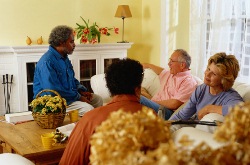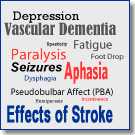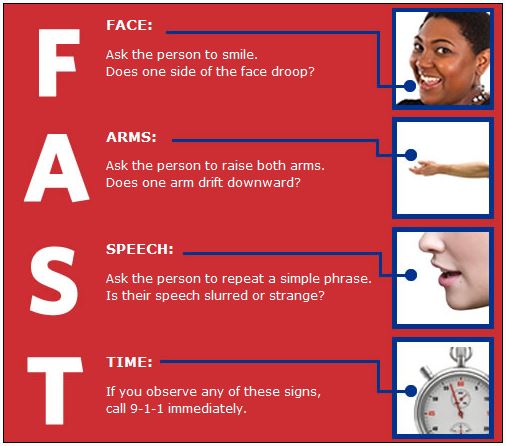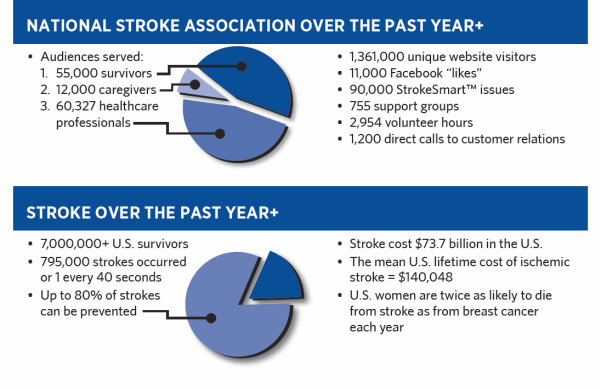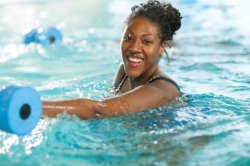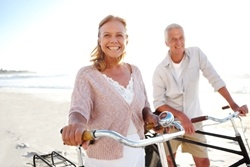Guides, Workbooks, and Textbooks
Brain (Body focus: Injury, Illness, and Health)
By Steve Parker
A detailed book about the brain.
Brain, Heal Thyself: A Caregiver’s new Approach to Recovery from Stroke, Aneurysm, and Traumatic Brain Injuries
By Madonna Siles
When Eve suffered a near-fatal brain aneurysm, Madonna Siles, her housemate and friend, too quickly found herself making critical short- and long-term medical care decisions.
Healing into Possibility: The Transformational Lessons of a Stroke
By Allison Bonds Shapiro
Allison Bonds Shapiro suffered two debilitating and nearly fatal strokes in her fifties. This book chronicles her experience.
Psychotherapeutic Interventions for Adults with Brain Injury or Stroke: A Clinician’s Treatment Resource
By Karen G. Langer
Stroke: A Comprehensive Guide to “Brain Attacks”: Everything You Need To Know
By Vladimir Hachinski, Larissa Hachinski
An authoritative resource on strokes designed for both sufferers and anyone who needs to understand this disease.
Stroke: A Practical Approach
By James D. Geyer, Camilo R. Gomez
This book is a unique source of practical information for front-line providers of care for stroke patients.
Stroke: Brain Assault: Suggestions, Encouragement and Exercises to Help You or Your Loved One Overcome the Effects of a Stroke
By Madelina A. Depaz
The story of one woman’s experience of an aneurysm stroke.
Stroke: Practical Guide for Clinicians
By N.M. Bornstein
Stroke: Practical Management
By Charles P. Warlow, Graeme J. Hankey, Peter Langhorne, Joanna M. Wardlaw, Peter Rothwell
Completely updated edition, written by a close-knit author team. Presents a unique approach to stroke.
Stroke
By Louis R. Caplan
Stroke, the fourth volume in a series sponsored by the American Academy of Neurology, was written for both stroke survivors and individuals wishing to learn more.
Stronger After Stroke: Your Roadmap to Recovery
By Peter G. Levine
Written for stroke survivors, their caregivers and their loved ones. Stroke survivors recover by using the same learning techniques that anyone uses to master anything.
The Other Brain: From Dementia to Schizophrenia, How New Discoveries about the Brain Are Revolutionizing Medicine and Science
By R. Douglas Fields, Ph.D
Despite everything that has been written about the brain, a very important part of this vital organ has been overlooked in most books until now.
Books by Stroke Survivors & Caregivers
Brain, Heal Thyself: A Caregiver’s New Approach to Recovery From Stroke, Aneurysm, and Traumatic Brain Injuries
By M.D. Lawrence J. Beuret
This is a good book about the before, during, and after of trauma-like brain injuries. The author explains how lonely the caregiver is and how overwhelming the task.
Climbing the Mountain: Stories of Hope and Healing after Brain Injury and Stroke
By Candice Fancher
An inspiring anthology of stories by stroke/brain injury patients and their family members.
Conquering Stroke: How I Fought My Way Back and How You Can Too
By Valerie Green
The informative, inspirational, and moving account of Valerie Greene’s journey.
Don’t Leave Me This Way: Or When I Get Back On My Feet You’ll Be Sorry
By Julia Fox Garrison
The story of a 37-year-old woman suffering a massive brain hemorrhage and her extraordinary recovery.
Eureka! Memories and Motivations: A Strategy for Creating a Healing Home for the Stroke/Brain Injury Patient and Caregiver
By Madonna Siles
Strokes and brain injuries can strike on any given day, out of the blue, changing lives of loved ones forever.
How to Conquer the World With One Hand . . . And an Attitude (Second Edition)
By Paul E. Berger
The account of Paul and Stephanie’s struggle against a serious illness and the system that was supposed to help them.
Living with Stroke: A Guide for Families
By Richard C. Selenick
My Stroke of Insight: A Brain Scientist’s Personal Journey
By Jill Bolte Taylor
Jill Bolte Taylor was a 37-year-old Harvard-trained and published brain scientist when a blood vessel exploded in her brain.
My Stroke of Luck
By Kirk Douglas
At age 84, one of Hollywood’s brightest stars offers the inspirational but not at all pollyannaish story of his recovery.
Out of the Darkness
By Allison O’Reilly
An inspirational memoir – Allison shares her encouraging story of stroke and the rare “Locked-In Syndrome” she experienced. She tells her miraculous recovery, despite enormous odds. A story of inspiration, love and hope.
Sara’s Story
By Timothy Culver
When his 42-year-old wife and mother of their three children suffered a major stroke, Tim Culver could not believe it.
Stroke Victor – How to Go from Stroke Victim to Stroke Victor
By Bob Mandell
In Bob Mandell’s own words: “Stroke Victor is a How-To Book! It is not another survivor story, heartfelt as it may be. Follow this fact-filled, informative and realistically holistic approach to beating the odds after stroke!”
The Diving Bell and The Butterfly: A Memoir of Life in Death
By Jean Dominique Bauby
In December of 1995, Jean-Dominique Bauby, 43-year-old editor-in-chief of Elle magazine in France, suffered a stroke which severely damaged his brain stem. After several weeks in a coma, he woke to find that he was one of the rare victims of a condition called “locked-in syndrome,” or LIS, which had left his mind functioning but his body almost completely paralyzed.

